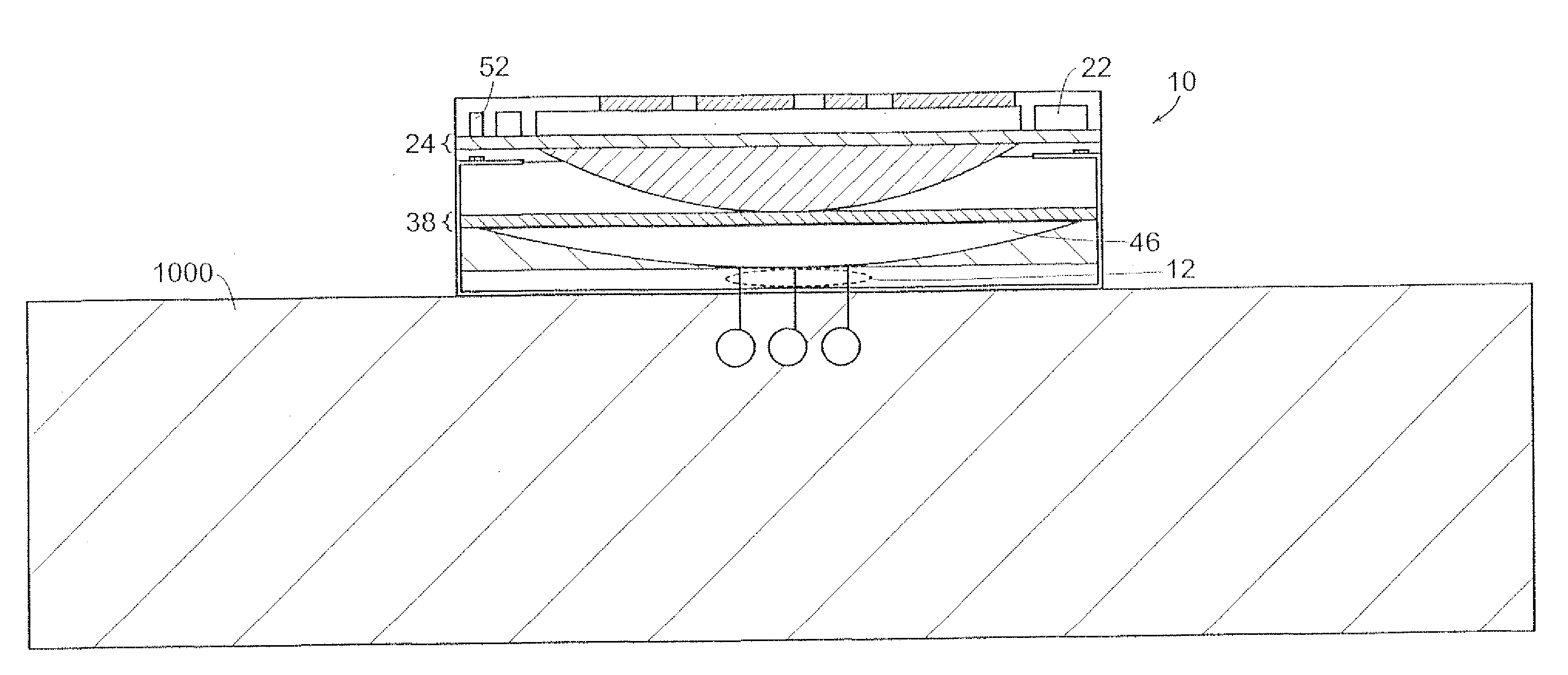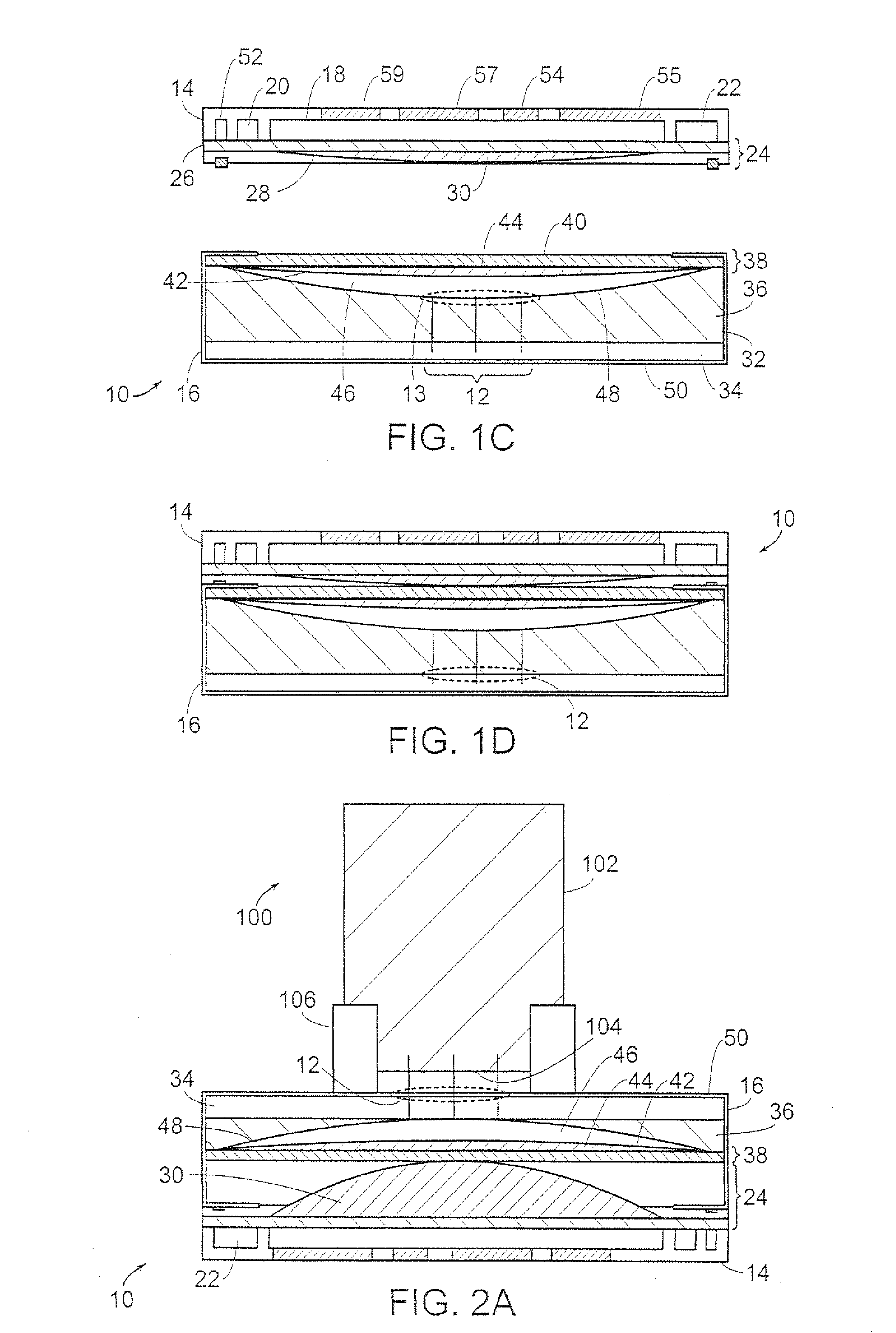Microneedle transport device
a technology of microneedle and transport device, which is applied in the direction of automatic syringes, diagnostic recording/measuring, applications, etc., can solve the problems of difficult material transport, inability to provide optimal transdermal transport, and difficulty in transferring compounds across the skin, so as to facilitate material transport, reduce pain or absence
- Summary
- Abstract
- Description
- Claims
- Application Information
AI Technical Summary
Benefits of technology
Problems solved by technology
Method used
Image
Examples
Embodiment Construction
[0039]A description of preferred embodiments of the invention follows.
[0040]Referring to FIGS. 1A-1D, there is shown a transdermal transport device indicated by the reference numeral 10. The device 10 includes an array of microneedles 12, that may be bent or straight, for piercing the outer layers of skin of the patient and for delivering a formulation of an active principle such as pharmaceuticals through the skin to provide accurate delivery of the pharmaceuticals to the patient. Moreover, because of the shape and size of the needles and the minimal depth of penetration of the needles, contact between the needles and the nerve endings beneath the outer layer of the skin is minimized so that pain is reduced or absent in the patient. The pharmaceutical may be a liquid formulation, or it may be one or more non-liquid drugs that are reconstituted just before delivery.
[0041]The transport device 10 includes a control unit 14 and a base unit or cartridge 16. The device 10 may be fully di...
PUM
 Login to View More
Login to View More Abstract
Description
Claims
Application Information
 Login to View More
Login to View More - R&D
- Intellectual Property
- Life Sciences
- Materials
- Tech Scout
- Unparalleled Data Quality
- Higher Quality Content
- 60% Fewer Hallucinations
Browse by: Latest US Patents, China's latest patents, Technical Efficacy Thesaurus, Application Domain, Technology Topic, Popular Technical Reports.
© 2025 PatSnap. All rights reserved.Legal|Privacy policy|Modern Slavery Act Transparency Statement|Sitemap|About US| Contact US: help@patsnap.com



